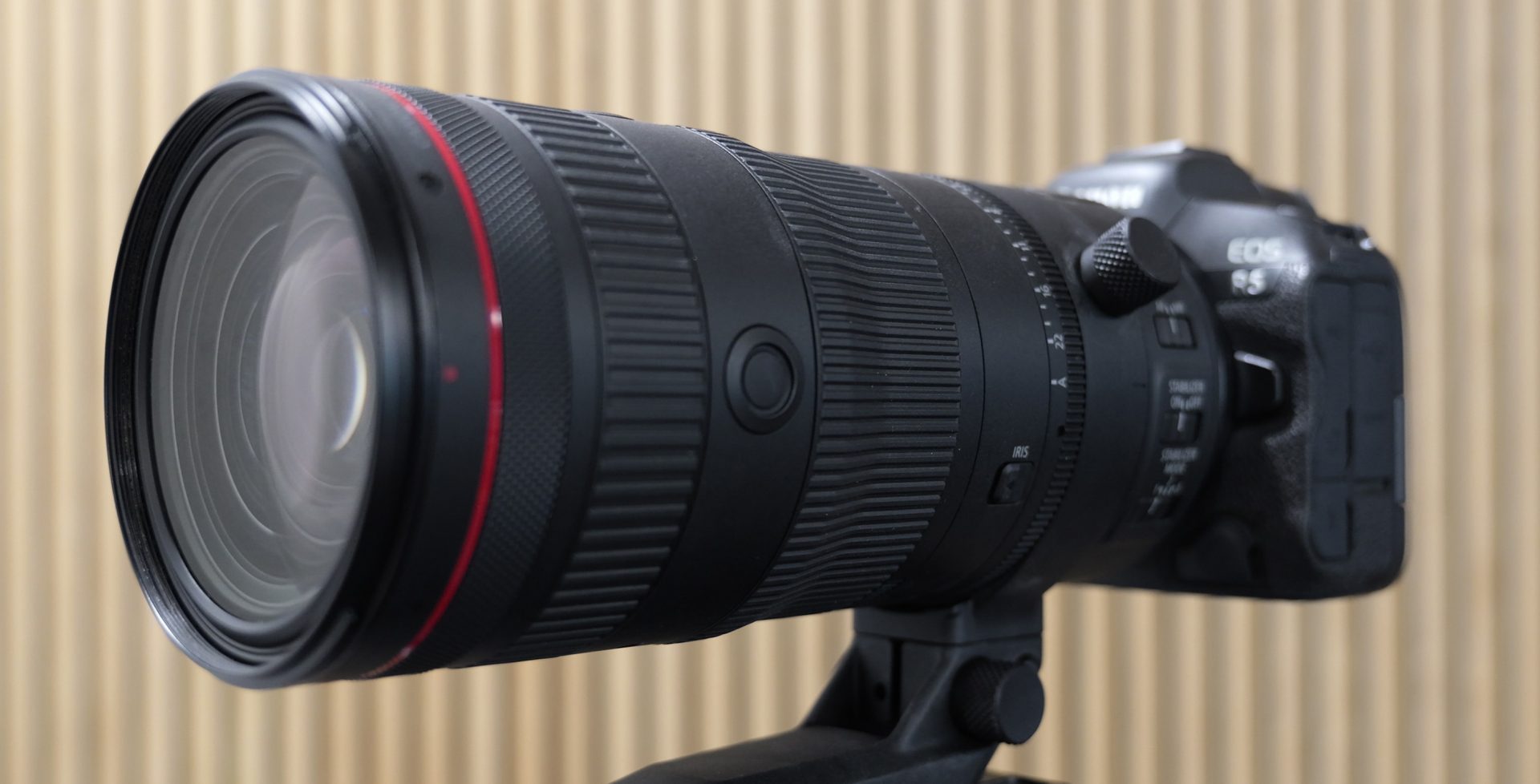Canon RF 24-105mm f2.8L IS USM Z review so far
-
-
Written by Gordon Laing
The Canon RF 24-105 f2.8L IS USM Z is a high-end general-purpose zoom with a bright aperture for the EOS R mirrorless system that’s corrected for full-frame bodies. I got my hands-on a pre-production model and in the following video will show you what I know so far. If you prefer to read a written version, keep scrolling!
Announced in November 2023, it’s not only a member of Canon’s high-end L-series, but also becomes the first in a new hybrid-series, aimed at those who capture both stills and video. The Z stands for zoom, but I believe the hybrid series could extend to all types of lenses, and no, it’s nothing to do with Nikon’s Z series.
Now you may think Canon’s standard RF lenses were already equally adept for both photo and video, but Canon says their optical designs and build are more aimed at stills photography. Meanwhile Canon’s Cinema EOS lenses are unashamedly targeted at the needs of videographers, so the new hybrid series slots between, with less compromise whether you’re shooting stills or video.
And even if you’re only shooting photos, it represents an interesting option, claiming the quality and speed of the RF 24-70 2.8, but with the extra reach of the 24-105.
Unsurprisingly this degree of performance doesn’t come cheap though, costing around £3400 at launch, but check the description for links to the latest and US pricing.
Measuring 89mm in diameter, 199mm long and weighing 1.33kg, it’s not a small or light lens either, roughly 50% longer and heavier than the RF 24-70 2.8L, and almost double the length and weight of the 24-105 f4L.
To accommodate the heft, it comes with a built-in collar and removeable tripod foot which allows the barrel and body to rotate within, although annoyingly without notches to guide you at 90 degree intervals.
The build quality is to the high standard you’d expect for an L-lens with sealing against dust and moisture, and a hood supplied as standard.
There’s four control rings, starting at the lens mount with a stepless aperture ring which turns smoothly and boasts very fine adjustment with 32 increments between each stop. It also uses an 11 blade system vs the nine of the 24-70 and 24-105 L lenses.
Aperture rings are rare on Canon’s non-cinema lenses, so this represents a differentiator, although at launch it’ll strangely only work in the camera’s video mode and ignored when shooting photos. I’ve asked if this could be fixed in a firmware update as surely everyone would want to use it.
Next is a generous zoom ring which you’ll note does not extend the barrel when adjusting the focal length – unlike most of the photo-centric RF lenses.
Then there’s a manual focusing ring, followed by the customisable RF control ring at the end of the barrel. There’s also a pair of AF stop buttons with a custom function, and an 82mm filter thread.
Canon describes the optics as being electronically parfocal, which means small autofocus adjustments are made to maintain a sharp image as you adjust the zoom. Canon also claims focus breathing is kept low, while also supporting the digital compensation in some bodies.
There’s optical image stabilisation, good for up to 5.5 stops for bodies without IBIS, or up to eight stops for those that do. Meanwhile focusing is taken care of by dual Nano-USM motors.
One of the more interesting features for video – or indeed remote – shooters is the ability to motorise the mechanical zoom using the new PZ-E2 or PZ-E2B accessories. These use gearing to physically turn the zoom ring, a little like the old EF-S 18-135 lens did.
Both PZ accessories operate under the camera’s battery power, but by connecting an external USB C source can reduce consumption while also offering a faster speed. The PZ-E2B version also sports a 20-pin port for connecting to broadcast grips, but both can also be operated by configuring buttons on the C70, R5 and R5C.
At the time I made this video, the two PZ accessories were expected to cost around £1100 and £1500 respectively, so add to the cost of an already expensive lens. But in broadcast or cinema terms, it’s actually relatively affordable, especially for a full-frame system.
Once I get my hands on a final production sample, I’ll add sample images to this page before following-up with a full video testing and comparing the quality and overall performance.
Right now, the RF 24-105 2.8 looks like an interesting option for hybrid shooters, or anyone who wished the 24-70 zoomed a little further. Indeed I reckon this extra reach coupled with less compromise for video and stills could make it a very attractive lens for events and weddings.
Check prices on the Canon RF 24-105mm f2.8L Z at B&H, Adorama, WEX UK or Calumet.de. Alternatively get yourself a copy of my In Camera book, an official Cameralabs T-shirt or mug, or treat me to a coffee! Thanks!




